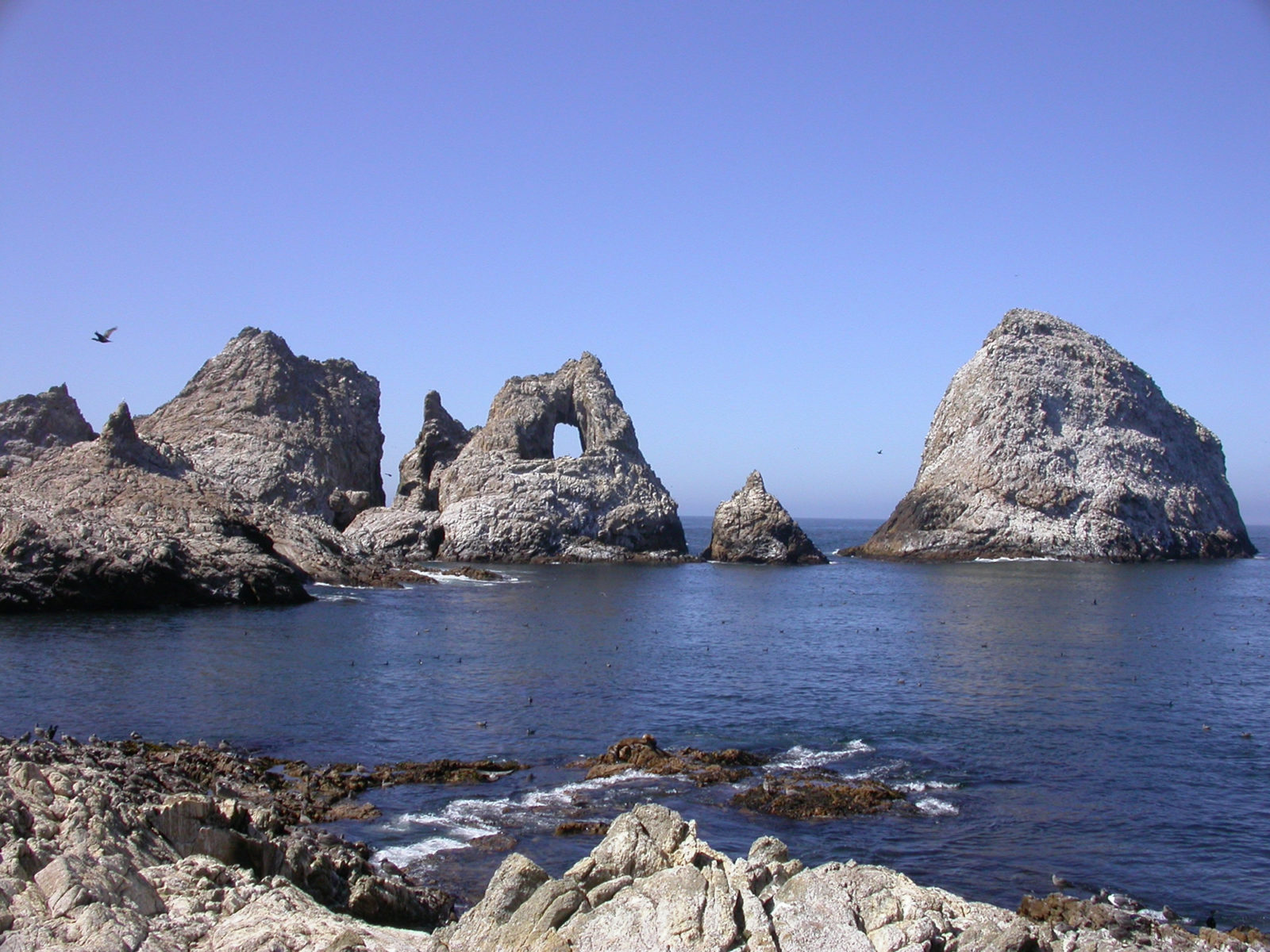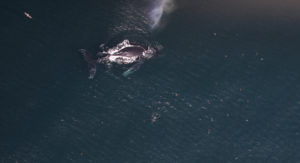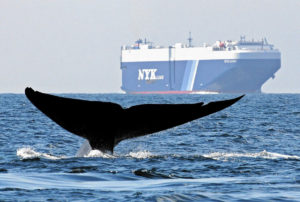It wasn’t until the federal government took away several of my favorite fisheries, and access to my favorite spots, that I fully comprehended what I had previously taken for granted … The ocean is, or was once, a public trust resource. This implies that you and I both have equal access. … I had fished one of the best spots to be found in any ocean. It has so many different kinds of fish, marine mammals, and birds that each day was a new and different marine wonderland. I can now tell everybody and anybody where it is [thus breaking a cardinal rule among fishermen] … because nobody will ever fish there again.”
Josh Churchman, life-long commercial fishermen, in The Whale that Lit the World (2018)
Just out of graduate school, I volunteered for Point Reyes Bird Observatory to start a research program on the ecology of marine birds at Southeast Farallon Island. Though they could not pay me at the time, I had convinced the organization that they needed me. The ecological treasure they occasionally visited to look for migratory land birds, in my estimation, was an opportunity to better understand the West Coast marine ecosystem.
My first week on the island, where I lived in an abandoned Coast Guard house, two large oil tankers collided in the foggy Golden Gate, spilling great amounts of fuel oil into the ocean. Soon thereafter common murres began to show up on the islands’ cliffs in greatly tarnished plumage. Oh boy, I thought. I had just read about the 1969 Santa Barbara oil spill — what was I getting myself into?!
I spent the next 20 years engaged in and organizing research there, learning about the ocean through the eyes of seabirds. One of my main interests was ocean conservation, and the following is a remarkable conservation success story, of which we rarely hear about, written by several diverse organizations and peoples, wanting to or not, who conserved certainly one of the world’s ocean treasures: the Gulf of the Farallones.
The San Francisco Bay Area is bordered on the west by the California Current, one of five upwelling-driven “boundary currents” on Earth where the vast majority of the world’s fishery harvests occur. These boundaries are the edges of major oceanic gyres, like the North Pacific Gyre in the case of the California Current. The incomparable productivity of these stretches of ocean are generated by strong, persistent winds that bring the upwelling of nutrient-rich water from the depths into the sunlight where phytoplankton, the base of the food web, can thrive. In the Bay Area, these are the strong northwest winds that we experience from March through July, which also produce our foggy weather as the cold water is brought to the surface. The major fishery takes from these systems are known as “pelagic” or “forage” fish species, such as sardine, anchovy and mackerel.
Each of these current systems hosts endemic communities of fish and predators, found nowhere else. Prominent among them are the so-called guano birds, whose fecal deposits once were the source for agricultural fertilizers, in the case of the Incas of the Peru Current, dating back hundreds of years, and then the source of chemicals for gun powder. Among these guano birds are species that early naturalists characterized as darkening the sky as they flew overhead. On research cruises in the Peru Current during the 1980s, I had witnessed lines of these birds, their usual flock form, which took many minutes to pass. These guano birds, in their historical vast numbers, and owing to their costly foraging behavior (diving), require extremely productive oceans to persist. Each of these bird communities associated with eastern boundary currents typically contains a cormorant, a sulid (booby, gannet) and a flightless species.
The California Current before the last ice age had a gannet and a flightless penguin-like bird, but these days the guano-birds are represented by the Brandt’s cormorant and common murre (the “penguin of the north”). The Somali Current hosts the Socotra cormorant and Abbott’s booby; for Benguela Current has the Cape cormorant, Cape gannet and African penguin; the Peru/Humboldt Current has the Guanay cormorant, Peruvian booby and Humboldt penguin; and the Canary Current, which lacks any islands suitable for seabird nesting, provides the wintering grounds of Europe’s northern gannets. Here’s the kicker: among these unique seabirds, almost all are now considered by the International Union for the Conservation of Nature to be in jeopardy if not critically endangered — the lone exception being the guano birds of the California Current.

The story of how this exception came to be begins around the first Earth Day, 1970, which signaled the beginning of a shift in how we humans view our place in the natural world. To that point, “fishing down the food web” was the over-riding philosophy behind society’s exploitation of the sea: deplete the whales, then the seals, then the large fish and then the large fish’s prey, the anchovies and sardines.
Recall the sad saga of Monterey’s “Cannery Row” in the 1950s and ’60s, when people thought that fishing hard on anchovies, a sardine competitor, would bring back the sardines. It didn’t work. And at the time there essentially were no regulations on take of rockfish (aka rock cod or boccacio), a benthic-dwelling group of species as adults, either for sport or commercial sale. Rockfish were so plentiful (and the target of Josh Churchman’s and others’ main ventures) that it was thought that they were exceptionally prolific, thus able to sustain extensive exploitation, something that newly instituted scientific investigations would quickly dispel.
Not surprisingly, in a changing ocean and under heavy exploitation, rockfish populations began to seriously decrease by the early 1980s in similar “Cannery Row” fashion. That proved to be critical: sardines, anchovy and juvenile rockfish, which are also pelagic, are the “currency” on which the marine food web west of the Bay Area is based.
The seabirds, as you might expect, followed the fish. Farallon murres, once numbering perhaps close to 1 million prior to the 1850s, supplied eggs to Gold Rush San Francisco, which reduced their population. By the early 1970s there were about 30,000 murres and about 20,000 Brandt’s cormorants nesting on the Farallon Islands, with sparser numbers on the coastal rocks. Owing to heavy mortality from coastal gill nets and oil spills, as well as poor reproductive success due to fishery extraction of anchovy and rockfish, the Farallon murre population failed to grow into the mid-1990s. During various El Niños, years when upwelling and ocean productivity curtailed, and already challenged by sparse food, murre and cormorant foraging effort increased, reproduction decreased and mortality events, as indicated by carcasses found on beaches, became more prevalent. Both cormorants and murres hit low points in the mid- to late 1980s – in the case of the cormorants, the breeding population dipped below 5,000 birds.

Then things began to change as ocean and coastal management became more enlightened (see timeline below). The federal and state governments protected coastal rocks, inhibiting disturbance from humans (such as low flying aircraft or boats). With the founding of parks, sanctuaries and protected areas, the cormorants colonized new places (especially Alactraz and Año Nuevo islands), and their numbers grew. Various fishery closures helped recover forage fish stocks like anchovy and rockfish, and have continued to do so. As a result, the murre population on the Farallones and coastal rocks began to recover, and is also continuing to do so, and over the course of a few decades has reached 250,000 (!) birds residing at sites around the Gulf of the Farallones. Cormorants began to return to the Farallones, but also increased at coastal sites, and throughout the Gulf of the Farallones reached a peak size exceeding 40,000 breeding birds, more than double their population of the 1970s. And finally, fishermen are enjoying increased fishing success around the boundaries of various marine protected areas, catching more and larger rockfish.
The restrictions and regulations of human activity responsible for the ecosystem recovery (see timeline above) were not exercised without justification. It has not been the case of government over-reach. Information was gathered by persistent, year-after-year, research in an increasingly broad, long-term effort (see timeline below).
The overall messages that came from this effort are: 1) seabirds, and especially murres and cormorants (indicators representing other predators such as salmon, halibut and whales) eat a lot of anchovies and juvenile rockfish; 2) when forage fish become unavailable offshore, either due to vagaries in ocean climate (e.g. El Niño brings reduced upwelling) or fishery extraction, the birds/predators move to and remain in near-coast waters, where anchovy are most prevalent; 3) if the food availability becomes severely restricted, seabird condition is greatly reduced and many die, showing up on beaches, and populations decrease; and 4), most importantly — the central thrust of ecosystem-based management — the simple message that if you want more salmon then there needs to be plenty of rockfish juveniles for predators to eat. With sparse rockfish juveniles, then the seabirds/predators move inshore to devour anchovies, in whose schools reside juvenile salmon. The birds don’t care to distinguish between the two, both are of high nutrient value, and are eaten voraciously.
None of this story — thriving populations of ocean predators occurring within viable, sustainable fishery resources — would have happened without involvement by the public, including many hundreds of volunteers, but even just public interest that added political pressure. It would not have happened without the cooperation of fishermen (like Josh Churchman), some of whom or their representatives are part of the Pacific Fisheries Management Council. Or without various non-governmental organizations who have participated in the research or have spoken for conservation, i.e. wise use, of the available resources. Or even the state and federal agencies who have responsibly conducted activities under the banner of informed management.
The hundreds of thousands of murres and cormorants flying in the Gulf of the Farallones today are a triumph of science, stakeholder and community interests being applied to ocean and coastal resource management. All that work by so many people, over so many decades, is why guano bird productivity in the ocean off the Bay Area Pacific shores is a global exception for boundary currents, and why unlike so many other places we do not have many species, including fished species, in unnecessary jeopardy. Save for climate vagaries, and management elsewhere than the coastal ocean, there are plenty of fish, too, to be caught and eaten.





